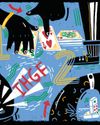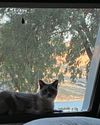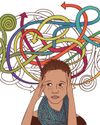
Ready? Here's your assignment: Watch a series of white, single-digit numbers flash against a black computer screen, each visible for slightly longer than one second. Your job is to press one key when the number three appears, and to press a different key for all the other numbers. The computer will respond to your actions with "Correct!" after each appropriate key strike or "Incorrect!" if you make a mistake.
It's easy, right? And it's somewhat fun at first.
But several minutes into this, your thoughts will probably drift from striking the correct keys to wondering how much longer you'll have to keep doing this. Then you might begin thinking about why one of your friends said that weird thing during class today, or what you have planned for the weekend. Meanwhile, your fingers are still pecking away at the keys.
This switch from thinking about the computer task to thinking about other things is called mind wandering, or daydreaming. It's something we're all familiar with because we all do it.
Daydreaming gets you in trouble if you're caught doing it during class, or in the middle of a basketball game, or anything else that requires focus and quick thinking. But here, with the computer task and its flashing white numbers, daydreaming isn't such a bad thing. Experiments like this one have taught scientists when and why our minds naturally wander, as well as how daydreams can boost brainpower.
Where Is Your Head?
Scientists have defined daydreams as private, internal streams of consciousness unrelated to our immediate circumstances or external tasks. Put simply, that means that daydreams are thoughts that have nothing to do with what you're doing while you're thinking them.
Denne historien er fra September 2023-utgaven av Muse Science Magazine for Kids.
Start din 7-dagers gratis prøveperiode på Magzter GOLD for å få tilgang til tusenvis av utvalgte premiumhistorier og 9000+ magasiner og aviser.
Allerede abonnent ? Logg på
Denne historien er fra September 2023-utgaven av Muse Science Magazine for Kids.
Start din 7-dagers gratis prøveperiode på Magzter GOLD for å få tilgang til tusenvis av utvalgte premiumhistorier og 9000+ magasiner og aviser.
Allerede abonnent? Logg på

HOUSE OF CARDS
TRY THE PERFECT EXPERIMENT—AND THEN REFLECT ON HOW IT WENT.

ACCIDENTALLY Delicious
Have you ever been really hungry, but there wasn't much to eat in your kitchen? Did you throw together a bunch of stuff you had on hand and were pleasantly surprised when it tasted good?

IS YOUR SOCIAL MEDIA FEED TOO PERFECT?
EVERYONE'S LIFE CAN APPEAR PERFECT ON SOCIAL MEDIA. On YouTube, Instagram, Snapchat, and similar apps, people tend to share their happiest, most picturesque moments. They carefully compose any text to get the message just right. They use filters and enhancements to glam up images and videos. The app sorts the posts with the most likes and comments to the top. The end result? All you see of others' lives is the best of the best.

Art ALERT!
THE CASE OF THE MASTERPIECE THAT WASN'T

MARYAM ZARINGHALAM
SCIENCE POLICY FELLOW AND WRITER

Lost Cat Treks More Than 800 Miles to Get Home
Rayne Beau (pronounced RANE-BO, as in \"rainbow\") is a two-year-old Siamese cat.

EASY AS ABC
But in number theory, well, it's complicated.

That Wanaka Tree Gets a Companion
\"THAT WANAKA TREE,\" AS IT'S CALLED, IS A FAMOUS WILLOW TREE THAT GROWS OUT OF LAKE WANAKA ON THE SOUTH ISLAND OF NEW ZEALAND.

Two College Students Devise Smart Glasses That Can ID People
YOU'RE WAITING FOR THE SUBWAY WITH A COUPLE OF YOUR FRIENDS.

Two Comb Jellies Can Fuse Their Bodies Together to Become One
COMB JELLIES ARE GELATIN-LIKE AND MOSTLY SEETHROUGH INVERTEBRATES, OR ANIMALS WITHOUT A BACKBONE, THAT FLOAT IN THE OCEAN NEAR SHORE.